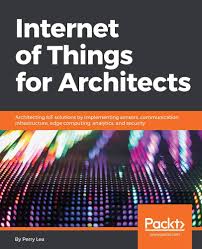The Internet of Things for System Architects: A Comprehensive Guide
Introduction
The Internet of Things (IoT) has revolutionized the way we interact with the world around us. By connecting billions of devices to the internet, IoT has opened up new possibilities for innovation and efficiency. System architects, as the architects of complex systems, play a crucial role in designing and implementing IoT solutions.
This white paper provides a comprehensive guide for system architects to navigate the intricacies of IoT, from understanding core concepts to designing and implementing scalable and secure IoT systems.
Understanding the Internet of Things
The Internet of Things (IoT) refers to the network of interconnected devices, vehicles, and other objects embedded with sensors, actuators, and software that enable them to collect and exchange data. IoT systems typically involve three key components:
- Devices: Physical devices equipped with sensors and actuators to collect and transmit data.
- Connectivity: Network infrastructure to connect devices to the internet.
- Data Processing and Analysis: Cloud-based platforms to process and analyze the collected data.
Key Challenges and Considerations for System Architects
System architects face several challenges when designing IoT systems:
- Scalability: IoT systems can generate massive amounts of data, requiring scalable infrastructure.
- Security: Protecting sensitive data and preventing unauthorized access is paramount.
- Interoperability: Ensuring seamless communication between devices from different manufacturers.
- Power Efficiency: Optimizing power consumption for battery-powered devices.
- Real-time Processing: Processing data in real-time to enable timely responses.
Designing IoT Systems
- Identify Use Cases: Clearly define the specific goals and benefits of your IoT solution.
- Select Appropriate Technologies: Choose suitable hardware, software, and communication protocols.
- Architect the System: Design a scalable and resilient architecture.
- Ensure Security: Implement robust security measures to protect data and devices.
- Consider Edge Computing: Process data at the edge to reduce latency and bandwidth usage.
- Implement Data Analytics: Analyze data to gain insights and optimize operations.
Best Practices for IoT System Architects
- Modular Design: Break down the system into smaller, manageable components.
- Standardization: Use industry standards and protocols to ensure interoperability.
- Security by Design: Integrate security measures from the beginning of the design process.
- Continuous Monitoring and Maintenance: Monitor the system's performance and address issues promptly.
- Ethical Considerations: Be mindful of privacy and ethical implications.
The Future of IoT
The future of IoT is promising, with emerging technologies like 5G, artificial intelligence, and machine learning driving innovation. System architects will play a pivotal role in shaping the future of IoT by designing intelligent and interconnected systems that benefit society.
Conclusion
IoT has the potential to transform industries and improve our lives. By understanding the core concepts, challenges, and best practices, system architects can design and implement robust, scalable, and secure IoT systems. As the IoT landscape continues to evolve, system architects will be at the forefront of innovation, driving the next wave of technological advancements.
References
- Gartner: https://www.gartner.com/en
- IoT Council: https://theinternetofthings.eu/
By following these guidelines and leveraging the latest technologies, system architects can contribute to the development of innovative and impactful IoT solutions.



